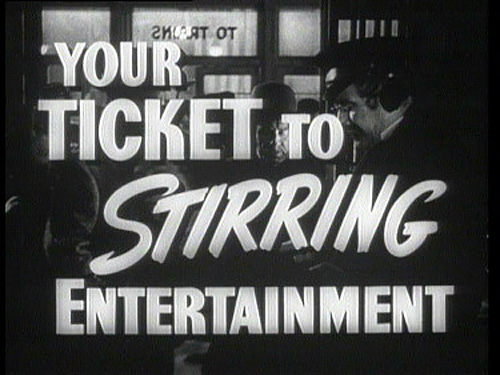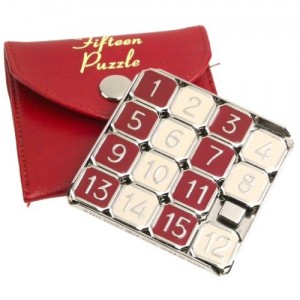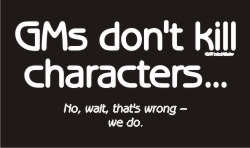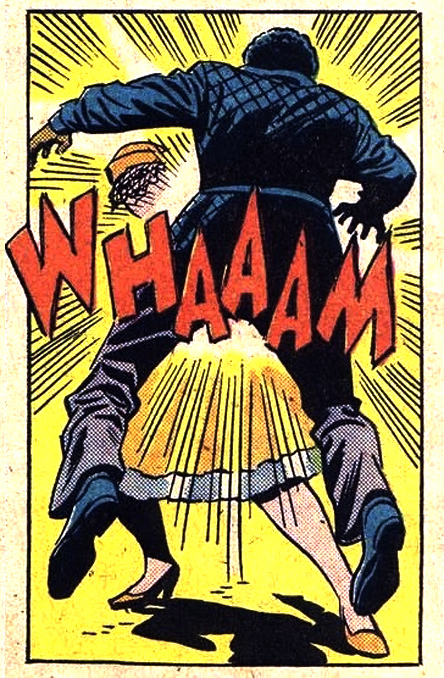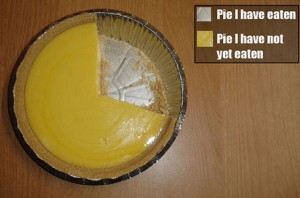First, a brief linkage: yesterday, I wrote a post on ktliterary.com. It was supposed to be about what it’s like to live with a literary agent, but it really ended up being about what an agent’s job is like, from the point of view of a writer. People seem to like it a lot, which is kind of a happy surprise. Check it out.
A couple days ago, I blogged/reposted a comment I made about Games and Stories and Could One Be the Other and Other Big Questions Like That.
Today, not so much.
Reasons:
- Chuck is already talking about that, and
- I chimed in there (a number of times) and really can’t bear to repeat it all here (twice in the same week)
- That “can games, which inherently have more than the author creating the end product/story, really produce Something of Meaning, if the creators didn’t really have final say in the end product?” question, while worthy and interesting, wearies me, because I’ve been having that discussion for about (checks game blog)… huh. Almost exactly six years ago, to the day. Interesting. ANYWAY, it’s all good discussion that I’ll follow avidly, but after thinking about it this morning, I really can’t bear to get into all of that again personally.
- While the “are games breaking into that high-level of story product” question is interesting, there’s something else I find more interesting. Here’s the quote that got me thinking about it.
Chuck: ME2 is […] a dumb story in a rich storyworld — a generic adventure amidst great characters, fascinating situations, and troubling moral quandaries.
Which got me thinking. (Obviously. I mean, here I am, thinking.) When Chuck talks about ME2’s dumb story, what he’s referring to is “the plot”. I infer this because he then mentions great character, situations, and quandries, so “plot” is about the only other story element left.
I want to make this clear: this post isn’t about/attacking/defending ME2 or Dragon Age or anything. I have a post I want to write for the game blog about those games, but I’m waiting until Kate’s done with ME2, and it’s much more about the games as games, hence the eventual location of the blog post. That’s not what this is about. Suffice it to say I enjoy games and move on.

It’s also not about taking apart Chuck’s statement. I feel like I’ve been picking at his stuff for the last couple days, and that makes me hate myself a little.
In this case, I’m quoting Chuck because he got me thinking about what stories are — what elements they must contain in order to be called a story, and how “concentrated” those elements have to be to be called a good story.
So. I just posed two questions.
One: what elements must a story contain in order to be called a story? I go back to that quote, above, and extract this list:
- Plot
- Characters
- Situation/Setting
- Quandaries
I’m sure I could google up some kind of official list of story elements that hundreds of literary experts agree on, but frankly I don’t care to; this list works for me. If you have a list you like better, use that one.
Two: How “concentrated” do those elements have to be to be called a good story?
Okay, in order to judge levels of ‘concentration’, we need some kind of rating system.
…
Hmm. I see where I’m going here. No. No, I don’t think I’m going to use the FUDGE rpg’s “ladder” to rate literature. The end result is going to sound like that horrible essay the kid reads near the beginning of Dead Poets Society. No.
(Even though it would totally work.)
So anyway, let’s just focus on the descriptive words.
“Man, the plot is piss-poor, but the characters, the quandries, and setting/situation? All great.”
Okay… so, looking at that, that’s three elements where the story is ‘great’, and the one where it’s ‘poor’.
Is it a great story at that point? Over all?
I think it is.
Disagree?
Okay, well, what if I told you that that quote above wasn’t Chuck talking about Mass Effect 2, but me talking about Cormac McCarthy’s Pulitzer Prize winning The Road?
Because it totally is.
Great characters. Gut-punch quandaries. Very compelling setting/situation. Plot?
Plot?
A guy and his kid walk from Point A to Point Z. They almost starve and almost freeze to death… about a half dozen times. I mean, I don’t mean to spoil the book for you, but… that’s the plot. The Road is (in my opinion) ALL in the characters and quandaries.
Or I can make it a little more personal: I’ve got a book out with an agent right now where, so far as the plot is concerned, nothing changes. The situation in terms of plot as it exists on page 3 remains completely unchanged at the end. The characters travel from point A to point Z. That’s it. I’m willing to mention this ‘weakness’ because, judged objectively, that doesn’t seem to fucking matter to anyone.
I’ve done seven full revisions on the story at this point, as requested by my agent, a publisher, and others, and not once did anyone say ‘this lack of plot kills it for me.’
You know what they ask for? Over and over? More stuff with the characters. More psyche delving.
So I have to wonder: if some of the elements are strong enough, does it matter if one of the others is weak? Or absent?
Or… dare I say it… unimportant?
Another example: I love reading Greg Rucka’s stories, in part because he writes really good yarns that I could never write myself, not in a thousand attempts. Densely packed international intrigue, these things, with double- and triple-crosses and international political ramifications you need the CIA Factbook to comprehend, let alone create.
I wouldn’t say moral quandaries are very important to the story, though. They’re there, but the characters don’t sit there and agonize over them. They might drink themselves into a coma about what they did later, but at the point of decision, they just pushed the button/flipped the switch/pulled the trigger and walked away.
Does that matter? Nnnnoo… actually, it’s a spy story; that’s sort of the point.
Slightly different example: Neal Stephenson and Dan Brown don’t hinge their (quite amazing) stories on great, deep characters. In my opinion.
Hell, neither does Tolkien. Compelling archetypes and “great characters” aren’t the same thing.
I’m not saying you couldn’t have a wonderful, amazing, mind-blowing story that really gets all these four elements up in the “great” range. Certainly you can.
But… certainly you must?
I don’t know. I’m still thinking about it. But I don’t think so.


